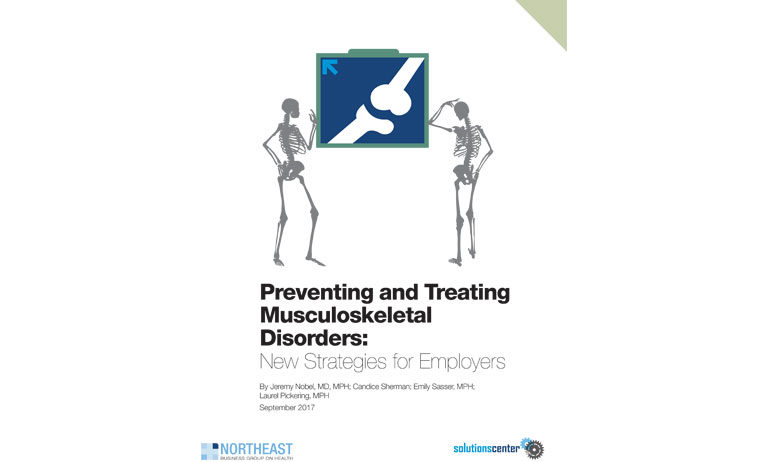Report focuses on employer strategies for easing MSD costs, health burdens

New York – Employers can use several strategies to mitigate cost and health issues associated with workers’ musculoskeletal disorders, the Northeast Business Group on Health suggests in a report issued Sept. 21.
A March 2016 study released by the United States Bone and Joint Initiative estimated that half of all Americans have a musculoskeletal condition, including arthritis and back pain. The annual costs for treatment, care and lost wages total $213 billion.
“High-value strategies can be implemented for all types of employees,” the NEBGH report states. “When considering where to begin in better managing MSDs, employers can look to their own experiences with claims, disability, workers’ compensation and [health risk assessment] data to best prioritize program selection and implementation.”
NEBGH suggests using onsite ergonomics training, online courses on the subject and workplace redesigns to reduce MSD prevalence and incidence.
“Such prevention programs often are not expensive, and vendors that employers have already engaged with may be able to offer ergonomics programs that integrate well with other wellness and well-being offerings,” the report states.
NEBGH also suggests new approaches to treatment, such as online pain education, direct access to physical therapy by bypassing physician referrals, and directing employees away from “unnecessary diagnostic imaging and expensive visits to specialists.” Other approaches include “evidence-based” at-home treatments such as RICE (rest, ice, compression, elevation), inexpensive over-the-counter medication and physical therapists “who can both educate and treat.”
Finally, the report examined ways to ensure that if surgery is needed, that the care is performed in an efficient and cost-effective way. One technique highlighted was bundled payments for all services surrounding a surgery, including post-op care.
“No matter where employers focus first, the success of any initiative is significantly increased when accompanied by effective employee communications and outreach, coordination with other programs and services, defined success metrics, and attention from senior executives,” the report states.
Post a comment to this article
Safety+Health welcomes comments that promote respectful dialogue. Please stay on topic. Comments that contain personal attacks, profanity or abusive language – or those aggressively promoting products or services – will be removed. We reserve the right to determine which comments violate our comment policy. (Anonymous comments are welcome; merely skip the “name” field in the comment box. An email address is required but will not be included with your comment.)

